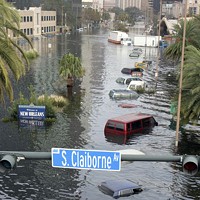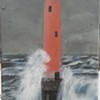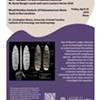"Never have human eyes beheld anything so beautiful."
-- Christopher Columbus, on first seeing Cuba
A first impression of this city is so indelible, a first reaction colored with such wonder and surprise that you're liable to describe it -- ingenuously -- as if yours were among the first Northern eyes to behold Havana. Mile after mile, century upon century of monumental architecture, much of it in picturesque decay, recalls nothing so much as the pre-industrial Rome described by Keats and Shelley. This is a CITY, of a size and an antique dignity to which nothing in North America can quite compare. A great many Americans have seen Havana for themselves, though not so many lately, and relatively few of my generation or the ones that came after. Fidel Castro's 1959 revolution swept out the CIA, the Mafia and the American sugar barons along with the puppet dictator Batista and his accomplices and beneficiaries; it's been half a century since Cuba was America's whorehouse, our no-limits Las Vegas, our slave-labor corporate meal ticket, our beautiful, defenseless lemon to squeeze and squeeze.
America lost its grip on Cuba in 1959 -- but never its compulsion to squeeze. The economic embargo in place since the Cold War is still enforced fanatically by Republicans indebted and subservient to the Cuban exiles in Miami, exiles whose original desire for repatriation and restitution has been replaced after several generations by a spiteful resolve to destroy Castro at any cost to the people of Cuba. Since the fall of the Soviet Union, which propped up the Cuban economy for three decades, the cost is brutally clear to any visitor. The first thing you notice in Old Havana is its majesty, what urbanologists call its "built environment," the cobbled streets of 16th, 17th and 18th-century buildings where anyone with a weakness for history and crumbling balustrades could wander for days in open-mouthed awe. The second thing you notice is that dogs and horses are so thin they're half transparent, and that many of the children look a little gaunt. Then you look into a grocery and see that the shelves, by American standards, are empty.
Since the post-Soviet "Special Period" began in 1991, Cubans have endured a Spartan code of food rationing the norteamericano finds incomprehensible. They make a bitter joke of these privations; they enjoy shocking overfed tourists with the details. An American expatriate, wife of a man who was once Cuban ambassador to Moscow, narrated a slide show on the life of the professional class in Havana. There was one slide, one image I couldn't shake off. Stuck in the iron grillwork in front of her elegant but fading villa -- delivered by a man from the state bakery who found the family not at home -- was the day's bread ration for a family of three: three small, hard rolls.
In the land of plenty we've not only forgotten hunger, we've forgotten equality. In Havana professors, lawyers and civil servants seem to get by on a roll a day. Cubans, obsessive about their hygiene and personal appearance, wash themselves with greasy government soap so demoralizing that they beg for bars of foreign soap from our hotel rooms, gifts more precious than cash. But those three forlorn rolls in the grillwork stayed with me. They triggered a painful cultural collision when we landed back in Miami and I picked up the New York Times. Headlining the section called "Escapes" was a feature on "The New Megayachts." American yacht builders were celebrating, with a minimum of irony, a growing class of new clients who will spend $200 million on boats up to 400 feet long -- and whine because so few marinas can accommodate them. But port cities and boat yards everywhere are scrambling to make room for these monsters, because the average megayacht spends $140,000 in every port of call.
"Human beings seem to be hardwired to want more," a business columnist wrote in the same Times. "No matter what people earn, they tend to estimate that the amount they really need to live on is just a bit beyond their means." The writer conceded that he was one of these human beings -- "I've come to see my TV as too small and my stereo as outdated ... my expectations for a basic lifestyle keep expanding" -- and documented America's metastasizing single-family home, grown on average from 1,500 to 2,400 square feet since the 1970s.
Single-family home? In Cuba, where nothing much new is built these days, where the government controls real estate and dictates every housing assignment, 12 or 15 family units -- often but not always extended families -- spill out of what were once single-family homes. Along with sporting singles and working prostitutes, young married couples make love along the waterfront seawall because it provides more privacy than they ever find at home. Just as we can scarcely imagine their hardships, Cubans can scarcely -- even with the help of television -- imagine our excesses.
Speaking of 4.00000
-
Letters to the Editor
Dec 19, 2007 -
Checking it Twice
Dec 19, 2007 -
Racial Whiplash
Dec 19, 2007 - More »
Latest in Guest Editorial
More by Hal Crowther
-

Sympathy for the Devils?
Jun 21, 2006 -

A Tale of Two Cities
Sep 28, 2005 -

Shame Is For Sissies
Jun 1, 2005 - More »
Calendar
-

NEW WINDOW GALLERY-Pat Rhea-ACRYLIC PAINTINGS-April 05-30 2024 VALDESE, NC 28690 @ New Window Gallery/Play It Again Records
- Through April 30, 12 p.m.
-

TheDiscountCodes
-

"Blood Residue Analysis of Paleoamerican Stone Tools in the Carolinas" @ Native American Studies Center
- Fri., April 26, 12-1 p.m.
-

Brightfire Music and Arts Festival @ GreenLife Family Farms
-

ARTS RENAISSANCE, a GALA supporting the ARTS in South Carolina @ the Columbia Museum of ART
-
5 Online Player Communities to Join in Michigan
-
I Changed my Sex. Now What?
Scott Turner Schofield's rapid transit to a new identity
-
A beginners guide to online sports betting in the US









